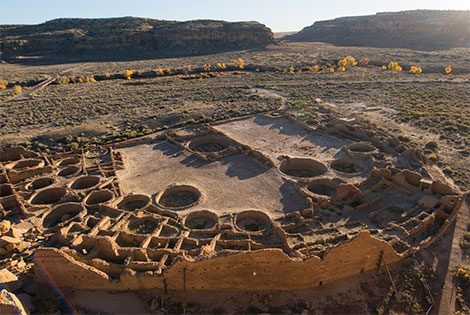 Plenary Speakers
Plenary Speakers
List of ICOPS
2023 Plenary Speakers
2023 Plenary Speakers
Debbie Callahan
Focused Energy
“From ignition on NIF to fusion energy on the grid using proton fast-ignition”
Thursday 8:30 am, El Dorado Grand Ballroom
Thursday 8:30 am, El Dorado Grand Ballroom
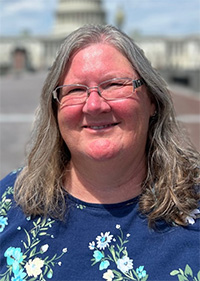 Dr. Debbie Callahan has spent her career working in inertial fusion energy and inertial confinement fusion. She was part of the leadership of the design used in the recent NIF record yield shots as the deputy for Integrated Experiments on NIF. She was also the Division Leader for Design Physics Division.
Dr. Debbie Callahan has spent her career working in inertial fusion energy and inertial confinement fusion. She was part of the leadership of the design used in the recent NIF record yield shots as the deputy for Integrated Experiments on NIF. She was also the Division Leader for Design Physics Division. She holds a PhD from University of California, Davis and is a fellow of the APS Division of Plasma Physics. She has been a co-recipient of the APS Dawson Award for Excellence in Plasma Physics twice (2012, 2022) for her work on NIF; she also received the Fusion Power Associates Leadership award in 2022. Recently, she moved from LLNL to Focused Energy Inc. – a start-up company with the goal of using proton fast ignition to make inertial fusion energy a reality.
EunMi Choi
Ulsan Institute of Science and Technology
South Korea
"High Power Terahertz Sources: New Applications and Challenges"
Tuesday 8:30 am, El Dorado Grand Ballroom
Tuesday 8:30 am, El Dorado Grand Ballroom
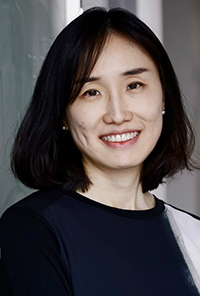 Prof. EunMi Choi is a professor of Department of Electrical Engineering at Ulsan National Institute of Science and Technology (UNIST), South Korea. She received her Ph.D in physics from Massachusetts Institute of Technology, Cambridge, USA in 2007. She was a post-doctoral researcher at Brookhaven National Laboratory (Upton, NY, USA) during 2008 and worked as a tool physicist at Schlumberger Technology Center (Houston, TX, USA) during 2009.
Prof. EunMi Choi is a professor of Department of Electrical Engineering at Ulsan National Institute of Science and Technology (UNIST), South Korea. She received her Ph.D in physics from Massachusetts Institute of Technology, Cambridge, USA in 2007. She was a post-doctoral researcher at Brookhaven National Laboratory (Upton, NY, USA) during 2008 and worked as a tool physicist at Schlumberger Technology Center (Houston, TX, USA) during 2009.She has led the THz Vacuum Electronics and Applied Electromagnetics (TEE) Laboratory as a principle investigator since 2010 with research focus on the development of high frequency novel vacuum electronic devices. Her main contribution in the field includes high power vacuum electronics development (gyrotrons, TWTs, etc) and its application for remote detection of radioactive materials experimentally, and energy recirculating microfabricated vacuum electronics amplifier source development. Her current research interest spans from development of electron beam based high power millimeter and THz sources, ultra compact THz sources at 300 GHz and beyond by means of micro-fabrication techniques, orbital angular momentum (OAM) beams generation for communication system and exotic electromagnetic waves generation, to their possible applications with novel techniques. She serves as a member of the IEEE Vacuum Electronics Technical Committee for the term 2021-2022. She has served many domestic and international conferences including a Co-Chair in the International Vacuum Electronics Conference (IVEC) 2019.
She is a recipient of 2006 IEEE Vacuum Electronics Conference (IVEC) & IVESC Best Student Paper Award. She received a Young Investigator Award in the Korean Institute of Electromagnetic Engineering and Science (KIEES) and a recipient of UNIST Rising-Star Distinguished Professor (2017-2020) at UNIST. In 2018, her research work was selected as Top 100 national R&D achievements in Korea. She received a national service merit medal from Korea Government in 2018.
Daniel Sinars
Pulsed Power Sciences Center
Sandia National Laboratories
"Z-pinches from 0.1 to 60 MA: Can we keep up the (magnetic) pressure?"
Monday 8:30 am, El Dorado Grand Ballroom
Monday 8:30 am, El Dorado Grand Ballroom
 Dr. Daniel Sinars is the Director for the Pulsed Power Sciences Center, which is best known for conducting research on the world’s most powerful pulsed power machine, the 26 MA, 80-TW, 22 MJ “Z” facility. The Z facility is used for a wide range of high energy density physics science, the study of matter and radiation at extreme pressures (>1 million times atmospheric pressure). Daniel is also the Sandia Executive for the Inertial Confinement Fusion and Science programs of the National Nuclear Security Administration. The Center manages a combined annual budget of >$150M and has about 300 employees. The Center also operates several additional facilities, including the multi-kJ, 2-TW Z-Beamlet laser facility adjacent to Z, the STAR gas gun facilities, and a variety of smaller pulsed power machines.
Dr. Daniel Sinars is the Director for the Pulsed Power Sciences Center, which is best known for conducting research on the world’s most powerful pulsed power machine, the 26 MA, 80-TW, 22 MJ “Z” facility. The Z facility is used for a wide range of high energy density physics science, the study of matter and radiation at extreme pressures (>1 million times atmospheric pressure). Daniel is also the Sandia Executive for the Inertial Confinement Fusion and Science programs of the National Nuclear Security Administration. The Center manages a combined annual budget of >$150M and has about 300 employees. The Center also operates several additional facilities, including the multi-kJ, 2-TW Z-Beamlet laser facility adjacent to Z, the STAR gas gun facilities, and a variety of smaller pulsed power machines.
Daniel joined Sandia in 2001 after receiving a PhD in Applied Physics from Cornell University, and a B.S. in Engineering Physics from the University of Oklahoma in 1996. He has made extensive contributions to inertial confinement fusion, high energy density science, and z-pinch physics research, with over 130 refereed journal publications in these fields (26 as first author) and an h-index of 46 (Elsevier Scopus). Daniel’s contributions were recognized in 2007 with an IEEE Nuclear and Plasma Sciences Society Early Achievement Award, and in 2011 with both a Department of Energy Early Career Research Program Award and the Presidential Early Career Award for Scientists and Engineers (PECASE). He was elected as a Fellow of the American Physical Society in September 2015. Daniel was honored with the Ernest Orlando Lawrence Award in 2022, which recognizes mid-career U.S. scientists and engineers who have advanced new research and scientific discovery supporting the Department of Energy and is one of the longest-running and most prestigious science and technology awards bestowed by the U.S. Government.
Jeremy Chittenden
Professor of Plasma Physics
Imperial College London
"Magnetized High Energy Density Science"
Tuesday 1:00 pm, El Dorado Grand Ballroom
Tuesday 1:00 pm, El Dorado Grand Ballroom
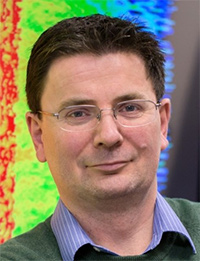 Prof. Jeremy Chittenden is a Professor of Plasma Physics at Imperial College with over 30 years’ experience of innovative research in fields of high energy density physics, laboratory astrophysics and inertial confinement fusion. He is responsible for developing a broad range of radiation hydrodynamics, MHD and kinetic plasma modelling tools which are used extensively in the design of experiments through collaborations with groups in the UK, US & France.
Prof. Jeremy Chittenden is a Professor of Plasma Physics at Imperial College with over 30 years’ experience of innovative research in fields of high energy density physics, laboratory astrophysics and inertial confinement fusion. He is responsible for developing a broad range of radiation hydrodynamics, MHD and kinetic plasma modelling tools which are used extensively in the design of experiments through collaborations with groups in the UK, US & France. In addition to his theoretical and modelling work, Prof. Chittenden also has extensive experience of experiments on large scale plasma facilities. Since 2013 Prof. Chittenden has been co-director of the Centre for Inertial Fusion Studies. He is one of small number of scientists to work in all three of the main approaches to inertial confinement fusion using either indirect, direct or magnetic drive.
Prof. Chittenden is a fellow of the American Physical Society, a William Penney Fellow and a divisional associate editor of Physical Review Letters and has published over 200 peer reviewed articles.
Yakov E. Krasik
PSAC Winner
Professor Physics Department
Technion, Haifa, Israel
"What kept me in pulsed power and plasma sciences for so long"
Wednesday 1:00 pm, El Dorado Grand Ballroom
Wednesday 1:00 pm, El Dorado Grand Ballroom
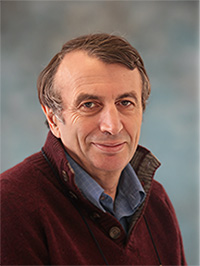 Prof. Yakov E. Krasik received his PhD. in physics from the Joint Institute for Nuclear Research, Dubna, FUSSR in 1980. Since 1980 he held various academic research positions at the Nuclear Research Institute, Tomsk and in 1991 he emigrated to Israel and joined the laboratory of Prof. Y. Maron at the Weizmann Institute of Science, Rehovot, Israel. In 1997, he moved to the Physics Department, Technion, Haifa, Israel, where he is currently Professor and Head of the Plasma Physics and Pulsed Power Laboratory and holds the Max Knoll Chair in Electronics and Opto-Electronics.
Prof. Yakov E. Krasik received his PhD. in physics from the Joint Institute for Nuclear Research, Dubna, FUSSR in 1980. Since 1980 he held various academic research positions at the Nuclear Research Institute, Tomsk and in 1991 he emigrated to Israel and joined the laboratory of Prof. Y. Maron at the Weizmann Institute of Science, Rehovot, Israel. In 1997, he moved to the Physics Department, Technion, Haifa, Israel, where he is currently Professor and Head of the Plasma Physics and Pulsed Power Laboratory and holds the Max Knoll Chair in Electronics and Opto-Electronics. Over the years, Prof. Krasik supervised 27 PhD and 24 MSc students, published 310 peer-reviewed articles, including 14 reviews and three textbooks chapters. He authored 27 patents in the field of pulsed power sciences. He is a Fellow of the American Physical Society and an IEEE Fellow. For several years he served as the chairman of the Israel Plasma Society. During his Tomsk period in eighties he has received several awards from the Academy of Science and the Ministry of Education (FUSSR), and the Institute of Nuclear Physics, Tomsk. In 2003 on his work on anti-terrorism defense technologies he was awarded the Technion prize, and in 2006 the Henri Gutwirth award. In 2020 he received the NPSS Magne "Kris" Kristiansen Award. He performed research while visiting the Imperial College, London, UK, Karlsruhe Institute of Technology, Germany, Institute of Applied Science, Mianyang, China and Deakin University, Australia.
Prof. Krasik’s main research contributions are in the fields of high-current ion diodes, plasma opening switches, plasma cathodes, nanosecond times scale gas discharges, underwater wires and wire arrays electrical explosion and the generation of strong shock waves, High Power Microwave generation and plasma diagnostics. Industrial and medical applications of plasma physics are also within the scope of his interests.
